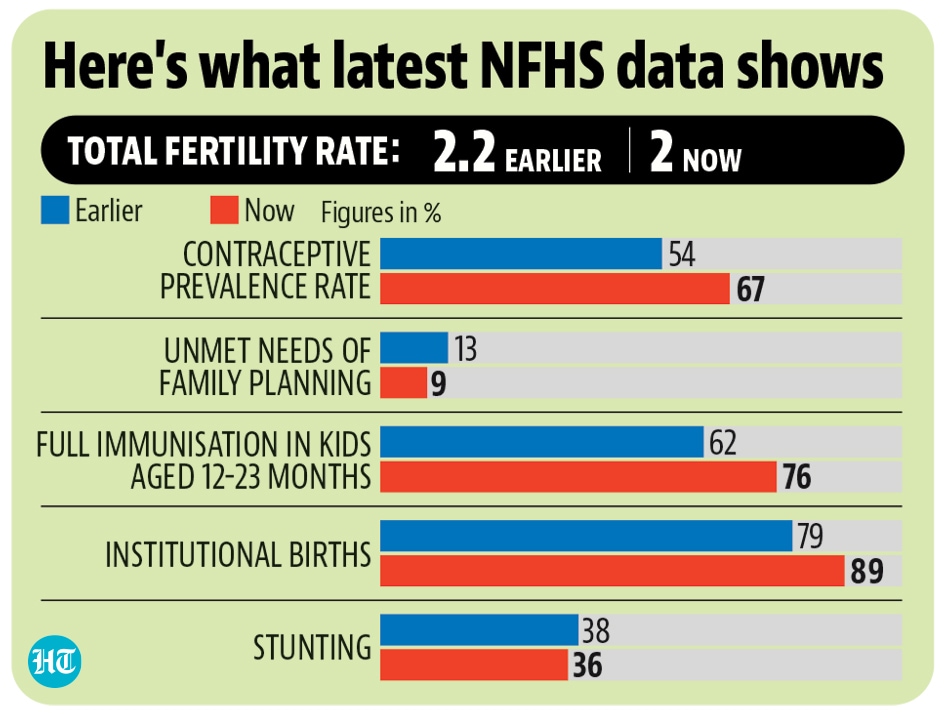According to data from the National Family Health Survey-5, India’s Total Fertility Rate (TFR), or the average number of children a woman has in her lifetime, has decreased from 2.2 to 2, while the Contraceptive Prevalence Rate (CPR) has climbed from 54 to 67 percent.
The data from Phase 2 of the poll was revealed on Wednesday by the union health ministry; data from Phase 1 was disclosed in December 2020.
The replacement rate is defined as a TFR of 2.1, which indicates that neither an increase nor a drop in population will occur.
The TFR was 2.2 in the fourth edition of the study, which was conducted between 2015 and 2016. The fifth survey was done in two phases between 2019 and 2021, and it reflects population control improvements.

NFHS-5, according to VK Paul, member (health), NITI Aayog, reveals that progress toward achieving sustainable development goals is picking up speed. He continued, “Data from the survey would assist the government in achieving Universal Health Coverage.”
Phase 2 included surveys in Arunachal Pradesh, Chandigarh, Chhattisgarh, Haryana, Jharkhand, Madhya Pradesh, Odisha, Puducherry, Punjab, Rajasthan, Tamil Nadu, Uttar Pradesh, and Uttarakhand. All other states assessed have a TFR that is at or below the replacement level, with the exception of Madhya Pradesh, Rajasthan, Jharkhand, and Uttar Pradesh.
Four of India’s 36 states and union territories have a TFR higher than the national average when both phases are considered. To be clear, the National Family Health Survey is a sampling survey, not an enumeration like the National Census.
To be clear, the National Family Health Survey is a sampling survey, not an enumeration like the National Census.
Meanwhile, the CPR has risen significantly across India, from 54 percent to 67 percent. According to the report, the number of unmet family planning requirements has decreased from 13% to 9%.
According to experts, the development of innovative reversible spacing (gaps between children) procedures, wage compensation systems for sterilisation, and the promotion of small family standards have all shown to be successful over time.
 India One News
India One News





